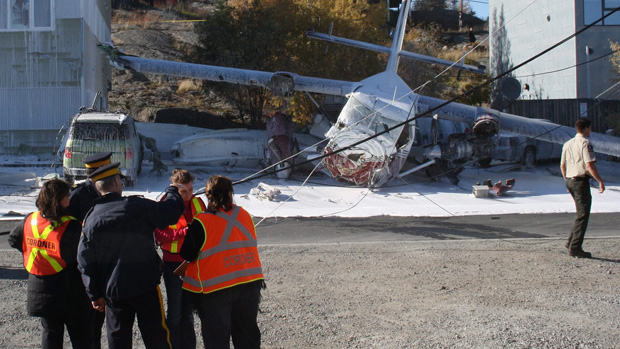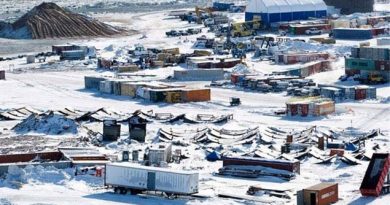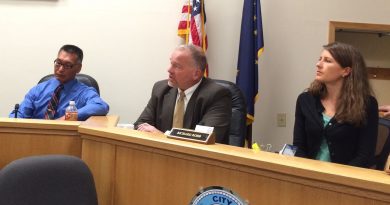Wind, loss of control factors in 2011 plane crash in Canada’s Northwest Territories
 Report says Arctic Sunwest float plane pilots were unable to recover from aborted landing
Report says Arctic Sunwest float plane pilots were unable to recover from aborted landing
The Transportation Safety Board has found wind conditions and improper go-around techniques following an aborted landing contributed to a fatal plane crash in the Old Town section of Yellowknife, the capital city of Canada’s Northwest Territories in September 2011.
The Arctic Sunwest Twin Otter float plane crashed on a city street following an attempted landing at the Old Town float base, killing both pilots and injuring seven passengers.
The report concludes airspeed fluctuations at touchdown, coupled with gusty wind conditions, caused a bounced landing; improper go-around techniques during the recovery from the bounced landing resulted in a loss of control; and it is possible that confused crew co-ordination during the attempted go-around contributed to the loss of control.
The report says the first officer, 26-year-old Nicole Stacey, was piloting the plane as it approached the landing area in Yellowknife Bay from the north. The captain, Trevor Jonasson, 36, advised an airspeed higher than usual for landing, and warned the first officer twice about the airspeed getting too low.
The aircraft touched down and bounced. The plane touched the water a second time, and the right float dug in, causing the plane to turn towards the right shore.
“Without declaring that he was taking control, the captain placed his right hand on the power lever over the FO’s left hand and initiated full power for a go-around,” says the report.
The aircraft lifted off the water nose high, right wing low. The right wing struck power lines, and the bottom of the floats then struck the side of a three-storey office building. The plane dropped to the ground on its nose section, then cart-wheeled to its left into an adjacent parking lot.
A total of 10 seconds passed between the aborted landing and the plane’s impact on McDonald Drive.
“With full flaps selected and both wings in a stalled or semi-stalled condition, the aircraft could not accelerate or climb for the remainder of the flight,” says the report. “Since the captain assumed control without declaring that he had control, it is possible that both pilots were manipulating the controls during the go-around.”
Both crew members were killed, four passengers were seriously injured, and three passengers sustained minor injuries. No one on the ground was injured in the crash.
For more northern stories from CBC News, click here



